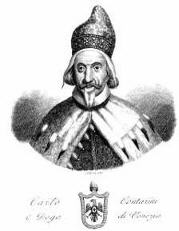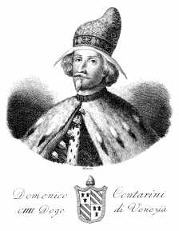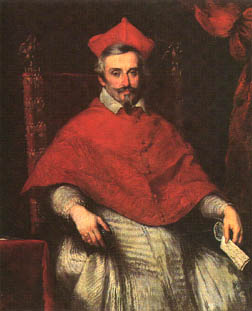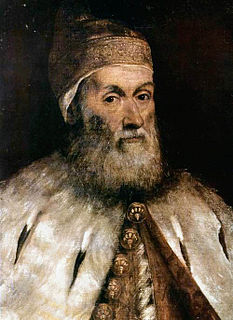- For the cardinal, see Francesco Cornaro (cardinal).
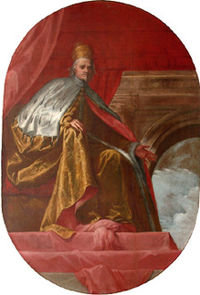
Francesco Cornaro or Francesco Corner (Venice, 6 March 1585 – Venice, 5 June 1656) was the 101st Doge of Venice. His reign as Doge was the shortest of any Doge. He was elected on 17 May 1656 and died only a few weeks later, on 5 June 1656.

Venice is a city in northeastern Italy and the capital of the Veneto region. It is situated on a group of 118 small islands that are separated by canals and linked by over 400 bridges. The islands are located in the shallow Venetian Lagoon, an enclosed bay that lies between the mouths of the Po and the Piave rivers. In 2018, 260,897 people resided in the Comune di Venezia, of whom around 55,000 live in the historical city of Venice. Together with Padua and Treviso, the city is included in the Padua-Treviso-Venice Metropolitan Area (PATREVE), which is considered a statistical metropolitan area, with a total population of 2.6 million.
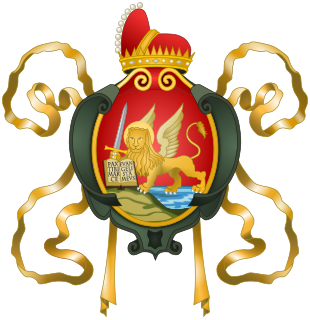
The Doge of Venice, sometimes translated as Duke, was the chief magistrate and leader of the Republic of Venice between 726 and 1797.
Francesco Cornaro was the son of Giovanni Cornaro, who was Doge of Venice from 1625 to 1629. Francesco Cornaro was married to Andriana Priuli, the daughter of Antonio Priuli, who was Doge from 1618 to 1623.

Giovanni I Corner or Cornaro was the 96th Doge of Venice, reigning from 24 January 1625 until his death.

Antonio Priuli was the 94th Doge of Venice, reigning from 17 May 1618 until his death. Priuli became Doge in the midst of an ongoing Spanish conspiracy orchestrated by the Spanish Ambassador to Venice, Alfonso de la Cueva, 1st Marquis of Bedmar, a "spy war" that did not end until 1622.
Francesco Cornaro had a prestigious political career. Cornaro soured on politics after an incident occurred while he was serving as the Ambassador of the Republic of Venice to the Duke of Savoy. The Duke became convinced that Cornaro was plotting against him and had Cornaro expelled from the Duchy of Savoy. After that, Cornaro withdrew from politics and devoted himself to business. It was widely believed that he would never be elected as Doge. However, after the death of Carlo Contarini on 1 May 1656 (a reign that lasted barely more than a year), Cornaro was elected Doge on 17 May 1656, only to die a few weeks later on 5 June 1656. He is buried in the Tolentini.
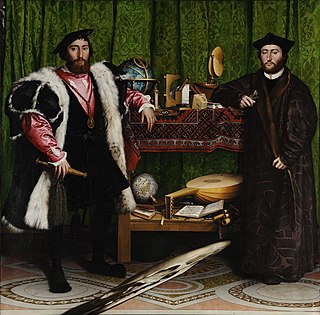
An ambassador is an official envoy, especially a high-ranking diplomat who represents a state and is usually accredited to another sovereign state or to an international organization as the resident representative of their own government or sovereign or appointed for a special and often temporary diplomatic assignment. The word is also often used more liberally for persons who are known, without national appointment, to represent certain professions, activities and fields of endeavor such as sales.

The Republic of Venice or Venetian Republic, traditionally known as La Serenissima was a sovereign state and maritime republic in northeastern Italy, which existed for over a millennium between the 7th century and the 18th century from 697 AD until 1797 AD. It was based in the lagoon communities of the historically prosperous city of Venice, and was a leading European economic and trading power during the Middle Ages and the Renaissance.

From 1416 to 1860, the Duchy of Savoy was a state in Western Europe. It was created when Sigismund, King of the Romans, raised the County of Savoy into a duchy for Amadeus VIII. The duchy was a subject of the Holy Roman Empire with a vote in the Imperial Diet. From the 16th century, Savoy belonged to the Upper Rhenish Circle. Throughout its history, it was ruled by the House of Savoy and formed a part of the larger Savoyard state.








